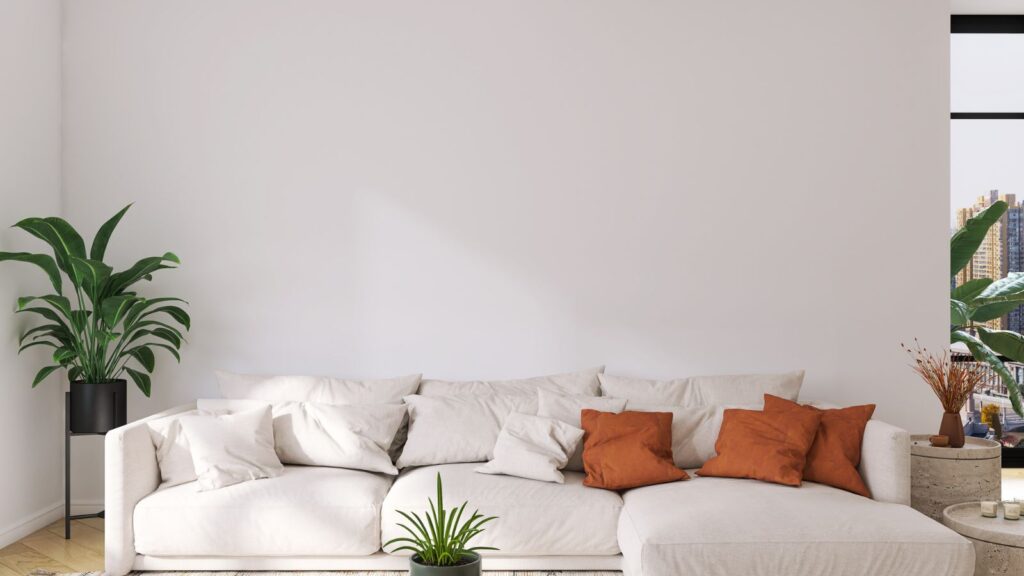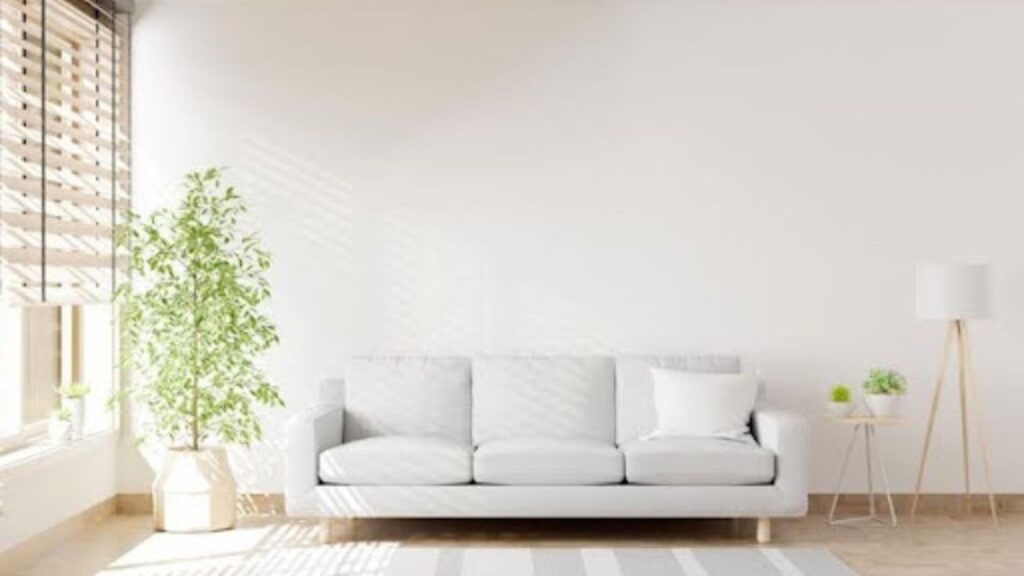Meta Description: Sleek design. Smart eco-features. Modern living with sustainable choices. Enhance your home with innovative, stylish solutions. Explore now!
Photo by wuttichai1983 on freepik.com
Alt Text: clean and bright minimalist living room
Our living spaces are more than just shelters—they reflect our values and aspirations. As environmental awareness grows, more individuals are eager to transform their homes into sustainability hubs.
Imagine a house where sleek aesthetics meet smart, sustainable features—a place where modern elegance aligns with eco-conscious living.
This blend of style and sustainability offers a reduced environmental footprint and tangible benefits like lower bills, improved health, and a harmonious living environment.
Dive into the transformative world of modern eco-homes and discover how to make a positive impact, one thoughtful choice at a time.

Redefining Modern Living Spaces
Traditionally, modern homes are recognized for their open floor plans, minimalistic designs, and use of advanced technology. However, the contemporary living concept is evolving to include eco-conscious features.
A modern home now isn’t just about stylish interiors—it’s about incorporating energy-efficient technologies and materials that reduce environmental impact.
For instance, integrating solar power for home energy solutions can significantly lower electricity bills and reduce reliance on non-renewable energy sources.
Moreover, modern homes are embracing multifunctionality with innovations like adaptable furniture. This type of furniture maximizes space and versatility, catering to the dynamic needs of contemporary lifestyles.
A living room can transform into a guest room or home office, aligning with the sustainable principle of maximizing limited resources.
This new vision of a “contemporary green home” balances cutting-edge design with eco-friendly innovations, creating spaces as sustainable as beautiful.
Eco-Friendly Home Office: Set up an eco-friendly home office with energy-efficient electronics, and plenty of natural light to boost productivity and reduce your footprint.
Practical Green Solutions for Your Home
To truly embrace this new way of living, consider integrating the following sustainable solutions into your home:
Energy Efficiency
Integrating energy-saving technologies into your home is an effective strategy to lower energy use and utility costs.
For example, choosing LED lights can significantly reduce energy consumption by up to 90% and have a lifespan of up to 25 times longer than standard incandescent bulbs, particularly when selecting products with an ENERGY STAR rating.
Moreover, proper insulation and high-efficiency windows maintain optimal indoor temperatures. These features minimize excessive heating or cooling, providing comfort while conserving energy.
Water Conservation
Conserving water is essential for both environmental sustainability and lowering household expenses:
- Water-Efficient Fixtures: Install low-flow showerheads, faucets, and dual-flush toilets to reduce water usage without compromising performance.
- Greywater Systems: Reuse water from sinks, showers, and laundry for irrigation and other non-potable uses. Greywater systems can significantly reduce freshwater consumption and lower utility bills.
- Rainwater Harvesting: Collect rainwater for gardening and flushing toilets. Simple systems like rain barrels or more sophisticated setups can store water for later use, reducing the demand for municipal water supplies.
- Sustainable Landscaping: Opt for drought-resistant plants and native species that require less water and maintenance. The owner of Precision Landscaping notes, “Utilizing 3D landscape design can significantly enhance your approach to water conservation. By visualizing your garden with drought-resistant plants and efficient irrigation systems, you can create a sustainable and aesthetically pleasing outdoor space. Incorporating water-efficient fixtures, greywater systems, and rainwater harvesting into your design not only benefits the environment but also reduces household expenses.”
Healthy Materials
Choosing sustainable and non-toxic materials promotes a healthier indoor environment and supports eco-friendly practices:
- Natural and Recycled Materials: Use materials like bamboo, cork, reclaimed wood, and recycled metal or glass. These options are often more sustainable than traditional materials and can add unique aesthetic appeal to your home.
- Low-VOC and Non-Toxic Finishes: Select paints, stains, and finishes that are low in volatile organic compounds (VOCs). Using non-toxic materials minimizes exposure to hazardous substances, promoting better health.
- Eco-Friendly Insulation: Invest in insulation made from sustainable materials like recycled denim, sheep’s wool, or cellulose. These materials offer excellent thermal performance and lower environmental impact than traditional insulation options.
- Sustainable Flooring: Choose from renewable or recycled materials, such as bamboo, cork, or reclaimed wood. These options are durable and reduce the environmental footprint associated with traditional flooring materials.

Extending Eco-Friendly Practices Beyond the Home
Photo by Freepik on freepik.com
Alt Text: young girl watching man cutting plastic bottle
Living sustainably extends beyond the walls of your home. Consider adopting these green practices to enhance your eco-friendly lifestyle:
- Reduce waste by composting kitchen scraps and recycling household items.
- Switch to eco-friendly cleaning products that are safe for you and the environment. The ones from Clean People can be a great choice, plus you can also get more tips in cleaning and knowledge on different kind of cleaning products.
- Explore sustainable transportation options like cycling, walking, or driving electric vehicles to reduce carbon emissions.
Expert Tip: Use thermal curtains to improve insulation, reduce energy consumption for heating and cooling, and add style to your home.
Living Green for a Better Life
Embracing sustainable practices transforms your home into a sanctuary that benefits you and the planet. Adopting a green lifestyle enhances your quality of life by creating a safe, comfortable home and allows you to contribute to the broader goal of achieving a sustainable future.
As you consider enhancing your living environment, consider the long-term benefits of these sustainable choices.
For those eager to learn more and take action, numerous resources are available to guide you in transforming your home into a beacon of modern, eco-conscious living.
